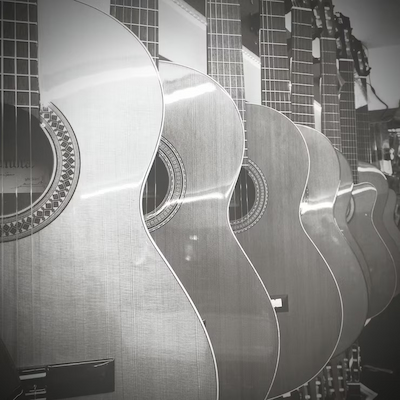
The relationship between music and architecture is a fascinating theme that has been explored by artists, architects, and musicians throughout history. Although these two disciplines are distinct in their practices, they share fundamental characteristics that connect them, such as rhythm, proportion, harmony, and the ability to evoke emotions. Music, with its fluidity and dynamism, can transform a space, while architecture, with its solidity and permanence, can shape and influence the musical experience. This intersection leads us to reflect on how sound and space can work together to create environments that not only house but also resonate with human feelings.
In recent years, research on the interaction between sound and space has gained prominence, especially in an increasingly urban and digital world. The way we design and organize our environments can have a significant impact on acoustics and auditory experience. Moreover, integrating musical elements into architectural design can result in more pleasant and functional spaces, offering a new perspective on how we experience our surroundings. Understanding this relationship is crucial for architects, designers, and urban planners, as it enables the creation of environments that are not only visually attractive but also sonically rich.
How Do Music and Architecture Work in Harmony?
Music and architecture work in harmony through fundamental principles that govern both disciplines. One of the most important concepts is rhythm, which manifests in both musical compositions and architectural structures. In music, rhythm is the repetition of sounds at regular intervals, creating a sense of movement and fluidity. In architecture, rhythm can be perceived in the lines and forms that make up a building, where the repetition of elements like windows, columns, and textures creates a visual cadence that guides the viewer’s gaze.
Another crucial aspect is proportion, which refers to the relationship between different parts of a work. In music, proportion is often used to create melodies and harmonies that sound pleasing to the ear. Similarly, in architecture, proportion is essential to ensure that spaces are balanced and aesthetically pleasing. The use of mathematical proportions, such as the Fibonacci sequence or the golden ratio, can be found both in musical compositions and architectural projects, demonstrating how these principles can be applied in creative and innovative ways.
Harmony, in turn, is a concept that applies to both music and architecture. In music, harmony refers to the combination of different notes to create chords that sound good together. In architecture, harmony can be seen in how the different elements of a building interact with each other, creating a cohesive and pleasing whole. This pursuit of harmony is one of the main objectives of artists and architects, who wish to create experiences that resonate emotionally with the people who interact with their works.
Finally, emotion is a central element that connects music and architecture. Both disciplines have the power to evoke feelings and create atmospheres that influence human experience. Music can make us feel joy, sadness, nostalgia, or even euphoria, while architecture can provide a sense of comfort, grandeur, or serenity. When these elements come together, the user experience becomes richer and more meaningful, resulting in environments that not only meet functional needs but also nourish the human spirit.

Advantages of Integrating Music and Architecture in Creating Environments
Integrating music and architecture in the creation of environments brings several advantages that can transform the way we experience the spaces around us. One of the main benefits is the enhancement of the sensory experience. By incorporating musical elements into architectural projects, such as acoustic panels that reproduce natural sounds or areas dedicated to musical performances, architects can create environments that stimulate the senses and provide a more immersive experience. This is especially important in public places like squares and parks, where social interaction and connection with nature are essential.
Another advantage is the promotion of emotional well-being. Studies show that music can have a positive impact on people’s mood and mental health. By designing spaces that include music, whether through sound installations or live performances, architects can contribute to the creation of environments that promote happiness and tranquility. This is particularly relevant in urban environments, where stress and hustle can affect people’s quality of life. Music can serve as a form of relief, making spaces more welcoming and enjoyable.
Moreover, integrating music and architecture can stimulate creativity and innovation. By exploring new ways to combine sound and space, architects and designers can develop innovative solutions that challenge traditional conventions. This approach can lead to unique and inspiring projects that not only meet functional needs but also stand out for their originality and ability to surprise and enchant. The creativity resulting from this fusion can, in turn, inspire other disciplines such as art and design, creating a virtuous cycle of innovation.
Lastly, integrating music and architecture can strengthen the cultural identity of a place. Music is a rich and diverse cultural expression, and by incorporating it into architectural projects, architects can celebrate and preserve local traditions. This can be seen in spaces that host musical performances, festivals, and community events, where music becomes an integral part of the social and cultural life of the community. This connection between music and architecture not only enriches the user experience but also contributes to the construction of a stronger and more meaningful collective identity.
How to Create Effective Architectural Resonance?
Creating effective architectural resonance involves careful consideration of several factors that influence the interaction between sound and space. One of the first steps is understanding acoustic perception in architectural projects. This means recognizing how different materials, shapes, and dimensions affect sound propagation within a space. For example, hard and reflective surfaces can amplify sound, while absorbent materials can attenuate it. Therefore, the choice of materials and the design of the space should be made based on a clear understanding of the desired acoustic properties.
Another important consideration is exploring sound spatiality in urban environments. Sound is not only an individual experience; it is also influenced by the context in which it occurs. In urban areas, where background noise can be high, it is essential to create spaces that offer sound refuges. This can be achieved through the use of vegetation, which acts as a sound buffer, or through the design of areas that favor acoustics, such as outdoor amphitheaters. Understanding how sound behaves in different urban contexts is essential to creating environments that promote architectural resonance.
Applying musical design in contemporary architecture is also an effective way to create resonance. This involves considering music not only as an element to be incorporated but as a guiding force in the design process. For example, creating spaces that allow for live musical performances or are designed to optimize acoustics can result in environments that become cultural meeting points. Musical design can inspire innovative solutions that transform the way people interact with space and with each other.
Finally, leveraging architectural vibrations to enhance the user experience is a powerful approach. Vibrations are not just a physical phenomenon; they also have the potential to evoke emotions and create connections. By designing spaces that take into account the natural vibrations of the environment, architects can create experiences that resonate emotionally with users. This could include the use of structures that amplify sound vibrations or the creation of environments that allow for sensory exploration through interaction with the space.

Did You Enjoy Learning About the Relationship Between Music and Architecture: Sound, Space, and Structure?
The relationship between music and architecture is a rich and inspiring field that invites us to explore new possibilities in design and experience. By considering how sound and space interact, we can create environments that not only meet our needs but also resonate with our emotions and culture. This integration is key to building a more harmonious and creative future.
We invite you to continue exploring this fascinating intersection between music and architecture. By deepening your understanding of how these elements intertwine, you will be able to appreciate even more the beauty and complexity of the spaces we inhabit, and be inspired to create environments that touch the heart and soul of people.
Frequently Asked Questions
How can music influence architecture?
Music can affect how you perceive a space. Sounds and rhythms create different atmospheres, shaping your experience in the environment.
What is the relationship between sound and space in architecture?
Sound behaves differently in various spaces. A closed environment may amplify sounds, while open spaces disperse them.
Is the relationship between music and architecture: sound, space, and structure important for artists?
Yes! Artists use this relationship to create unique experiences. They think about how sound will interact with the structure.
How do architects consider the layout for music?
Architects think about where people sit and how sound moves. They design so that music reaches everyone.
Can the relationship between music and architecture affect well-being?
Absolutely! Well-designed musical spaces can improve mood and comfort. The design should always keep this in mind.

